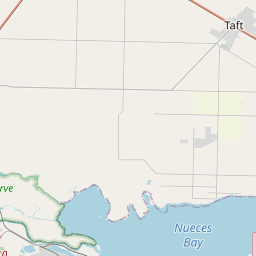Site of Bay View College
Historical marker location:






An important school of the coastal region, founded for scattered South Texas ranch children, by Thomas M. (1856-1943) and Alice Yantis Clark (1857-1913), of the family that founded Texas Christian University. The Clarks utilized 2-story "Hotel Portland", opened 1891 but soon idled by national business recession. With Mrs. Mollie Allen Turner as associate, they opened Bay View College in Sept. 1894, teaching primary through junior college subjects. Mrs. Clark, who also managed "The Home" for boarders, taught painting; Clark, music and literary subjects. Recreation included riding (on student-owned horses), house parties at patron George Fulton's Rincon Ranch (12 miles northeast), and an annual San Jacinto Day sail on Corpus Christi Bay. The first Bachelor of Letters degrees were awarded to a class of three: Wallace Clark, Lucille Long, Ed Rachal.
In time, a 2-story boys' dormitory, a gymnasium, and a 2-story chapel stood on campus. Students came from 70 Texas counties, 12 other states, and Mexico. Some Bay View graduates went on to senior colleges and entered professions, many remained in ranching. In 1916 , a hurricane destroyed most of the buildings. A day school session was held the next winter in the chapel, but the college formally closed in 1917. (1973)
As one of the most visible programs of the Texas Historical Commission (THC), historical markers commemorate diverse topics in Texas history, including: the history and architecture of houses, commercial and public buildings, religious congregations, and military sites; events that changed the course of local and state history; and individuals who have made lasting contributions to the state, community organizations, and businesses.
The world's first rodeo was held in Pecos, Texas in 1883. The event included bronco riding, calf roping, and bull riding.
By the early 19th century, Mexican settlers began to populate the area, leading to the establishment of San Patricio de Hibernia, a small community near the Nueces River. This settlement grew, becoming the county seat and a major center of commerce. However, as tensions grew between Mexico and the United States, San Patricio County became a focal point of conflict during the Texas Revolution. In 1836, local residents joined forces with Texan rebels to fight against Mexican forces in the Battle of Nueces.
After Texas gained independence from Mexico, San Patricio County continued to grow and develop. The discovery of oil and natural gas in the early 20th century brought prosperity to the area and attracted new industries. Agriculture, particularly cotton farming, also played a significant role in the county's economy. Over time, the county's population diversified, with immigrants from Ireland, Germany, and other parts of Europe contributing to its cultural heritage.
In recent decades, San Patricio County has continued to thrive, with the expansion of industrial and manufacturing sectors. The county is home to major refineries, chemical plants, and a naval air station. It has also become a popular tourist destination, with its coastal location offering beautiful beaches, recreational opportunities, and attractions such as the Copano Bay State Fishing Pier and the historic town of Sinton. Today, San Patricio County remains a vibrant community, embracing its rich history while looking toward a bright future.
San Patricio County Timeline
This timeline provides a concise overview of the key events in the history of San Patricio County, Texas.
- 1828 - The Mexican government grants land to Irish empresarios James Power and James Hewetson, leading to the settlement of Irish immigrants in the area that would become San Patricio County.
- 1836 - Texas gains independence from Mexico, and San Patricio County is officially established as a county of the Republic of Texas.
- 1870 - Railroads, including the Texas-Mexican Railway, begin operating in San Patricio County, boosting trade and transportation in the region.
- 1886 - The discovery of oil in neighboring Nueces County leads to the development of the petroleum industry in San Patricio County.
- 1927 - The town of Taft is incorporated, becoming an important center for the oil and gas industry in the county.
- 1941 - The Naval Air Station Corpus Christi is established southwest of Portland, becoming a major training base during World War II.
- 1961 - The construction of the Port of Corpus Christi's Ingleside Marine Terminal begins, further boosting the county's economic growth.
- 1970 - The completion of the Interstate Highway 37 connects San Patricio County to major transportation routes.
- 2017 - Hurricane Harvey makes landfall in San Patricio County, causing significant damage to the area.